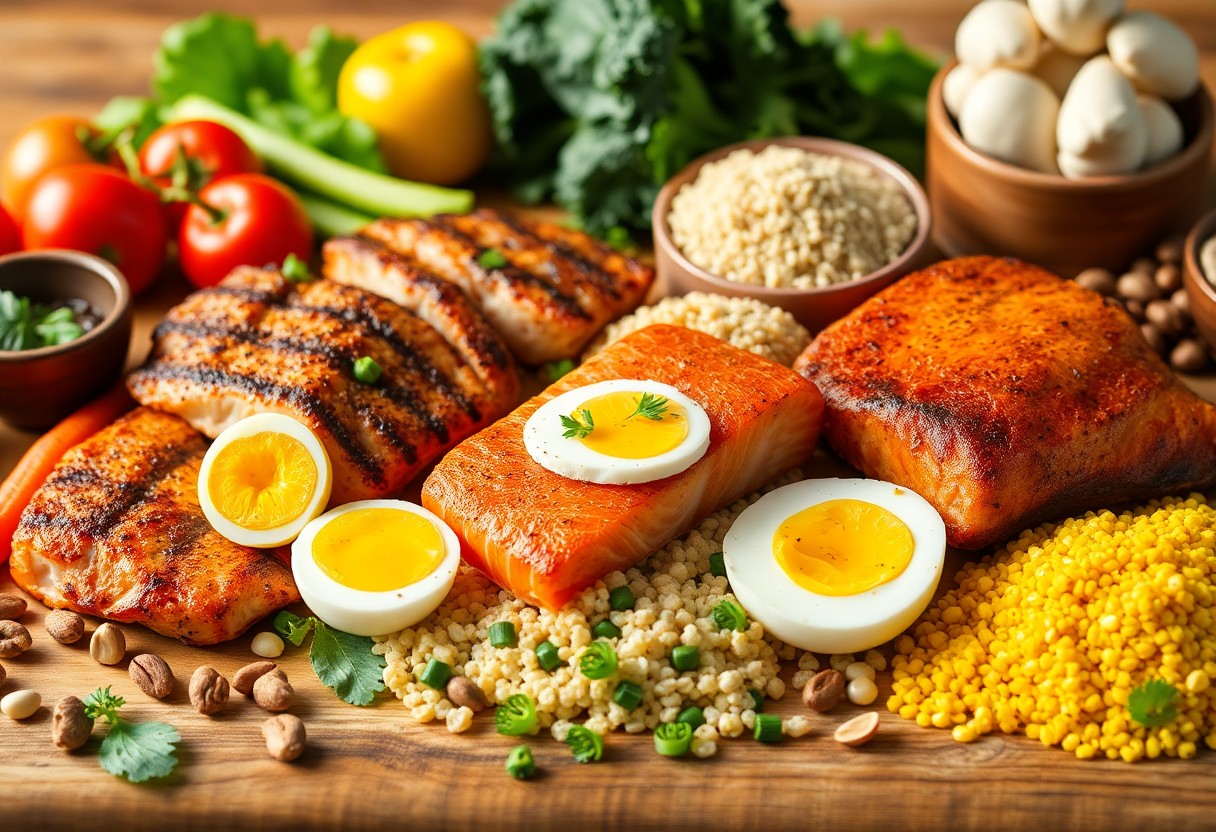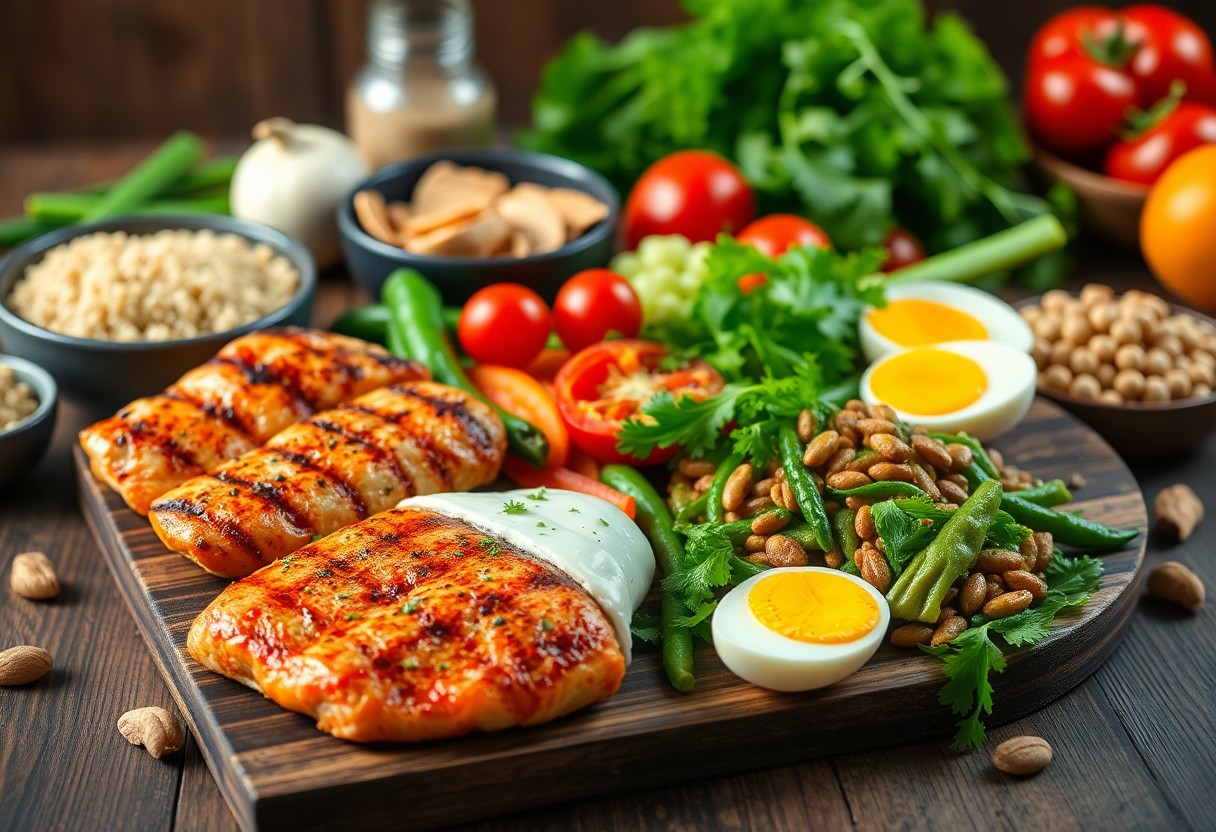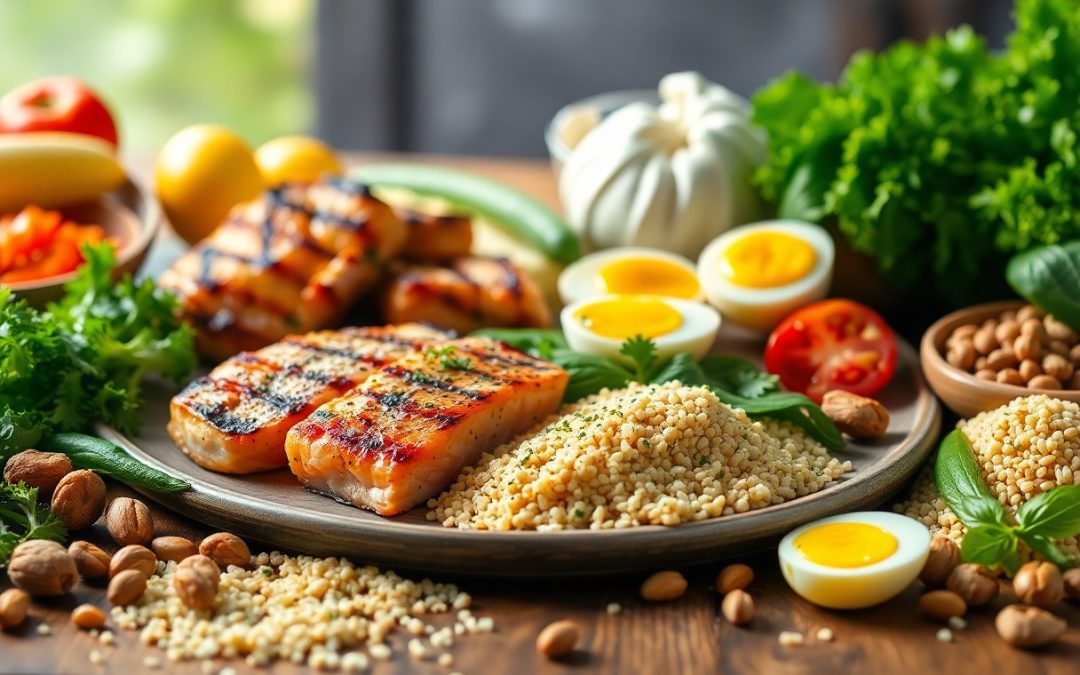Most people turn to a high-protein diet to improve their health and support weight loss, muscle growth, or increased energy. By focusing on protein-rich foods while limiting carbs and fats, you can feel fuller longer and boost your metabolism. However, excessive consumption of certain protein sources like red and processed meats may pose health risks, so it’s important to choose your foods wisely. In this guide, you’ll learn how this diet works, its benefits, the best foods to eat, and tips to get started effectively while protecting your health.

How High-Protein Diets Work
While adopting a high-protein diet, you increase your intake of protein-rich foods while reducing carbohydrates and fats. This shift supports muscle development, enhances satiety, and can help you achieve weight loss goals. Protein digests more slowly than carbs, which helps you feel fuller longer and can naturally reduce your calorie intake. By lowering your carbohydrate consumption, your body may also burn more fat for energy, making this approach effective for both muscle maintenance and fat loss.
Mechanism of Appetite Reduction
High-protein foods influence your appetite by promoting feelings of fullness and reducing hunger hormones. When you eat more protein, your body slows digestion, which helps you stay satisfied between meals and limits the desire to snack. This mechanism can help you control calorie intake effortlessly, improving your ability to maintain a healthy diet while supporting your weight management objectives.
Impact on Metabolism and Fat Loss
An increase in protein consumption can raise your metabolism by requiring more energy to digest and process protein compared to fats and carbohydrates. This metabolic boost supports fat loss while helping preserve your lean muscle mass, vital for sustaining long-term weight changes and overall health. You’ll find this effect beneficial as part of a well-rounded, high-protein eating plan.
Even more, a high-protein diet reduces your body’s insulin needs by lowering carbohydrate intake, which encourages your body to burn stored fat for energy. This shift helps you target fat loss more effectively without compromising muscle tissue. However, be cautious with sources like red meats and heavily processed meats, as their high saturated fat and sodium content can pose health risks. Balancing your protein sources and including plenty of fiber-rich vegetables will support your health and digestion during the diet.
Health Benefits of a High-Protein Diet
The high-protein diet offers several health benefits that can positively impact your body. It helps improve muscle strength, supports metabolic function, and promotes longer-lasting fullness, which may reduce calorie intake. By focusing on quality protein sources, you can enhance your overall health and maintain energy levels while managing weight effectively.
Support for Muscle Maintenance
Along with aiding weight management, high-protein intake is vital for maintaining your muscle mass. Protein digests slowly, providing a steady supply of amino acids that help repair and build muscles, especially when paired with physical activity. This support can prevent muscle loss as you age or reduce calories, keeping your body strong and functional.
Potential for Weight Loss
Diet plans rich in protein help you feel full longer, reducing the urge to snack and overall calorie consumption. Higher protein levels may also increase your metabolism, helping you burn more fat. This combination makes high-protein diets an effective strategy for achieving and sustaining weight loss goals.
Benefits of a high-protein diet for weight loss go beyond just appetite control. As you increase protein and lower carbohydrates, your body’s insulin demand decreases, encouraging fat burning for energy. However, it’s important to balance your diet with fiber-rich vegetables to avoid side effects like constipation. If you have kidney concerns, consult a healthcare professional before starting this diet, as excessive protein intake can be harmful in such conditions.

Potential Disadvantages of High-Protein Diets
If you decide to follow a high-protein diet, be aware of some potential disadvantages. This approach can put extra strain on your kidneys, especially if you have pre-existing kidney conditions. You might also experience digestive issues like constipation if you don’t balance your diet with enough fiber. Additionally, relying heavily on red and processed meats may increase your intake of saturated fat and sodium, which can negatively impact your health. It’s important to consider these factors before making significant dietary changes.
Nutritional Balance Considerations
Before starting a high-protein diet, ensure you maintain health by balancing your meals with fiber-rich vegetables and whole grains. Cutting carbohydrates too drastically can reduce vital nutrients, so including low-carb, fiber-filled options like leafy greens, broccoli, and cauliflower is important. This balance helps prevent digestive discomfort and supports overall health as you adapt to the diet.
Possible Health Risks
An excessively high intake of protein might raise your risk for kidney strain, particularly if you already have kidney disease or related conditions. Additionally, consuming too many processed and red meats can increase saturated fat and sodium levels, which may affect your cardiovascular health. You should consult your healthcare provider before starting this diet to make sure it’s safe for you.
But while a high-protein diet offers benefits like increased satiety and muscle maintenance, overconsumption without proper monitoring can cause kidney complications and elevate risks associated with saturated fat and sodium intake. To protect your health, it’s vital to moderate red and processed meats, include plenty of fiber-rich vegetables, and stay hydrated. Balancing your protein sources and overall diet can help you avoid these drawbacks while reaping the benefits.
Recommended Foods for a High-Protein Diet
Many foods can help you successfully follow a high-protein diet by providing the nutrients you need to support muscle maintenance and weight management. Focusing on a variety of protein sources, along with fiber-rich vegetables and whole grains, can optimize your overall health. Choosing the right foods ensures you feel satisfied and energized while meeting your dietary goals effectively.
Protein-Rich Foods to Include
By including a range of protein-rich foods like lean meats, poultry, fish, eggs, dairy, and plant-based options such as legumes, tofu, nuts, and seeds, you can maintain your muscle mass and boost satiety. These choices help balance your diet while supporting your metabolism, making it easier to stick to your protein goals without sacrificing variety or flavor.
Foods to Limit or Avoid
An important part of a high-protein diet is limiting certain foods, such as red meats high in saturated fats and heavily processed meats like bacon and sausage, which contain high levels of sodium. By avoiding these, you reduce potential negative impacts on your health while still meeting your protein intake.
Hence, it’s important to balance your diet by minimizing these risky foods to prevent issues like increased blood pressure or heart strain. Excess intake of processed meats and saturated fats can undermine your weight loss and health goals. Instead, prioritize fresh, natural protein sources and complement them with fiber-rich vegetables to support digestion and nutrient absorption, ensuring your diet remains both effective and safe.
High-Protein Diet Shopping Tips
For success in your high-protein diet, focus on choosing quality protein sources and balancing your meals with fiber-rich produce. Include foods like legumes, lean meats, nuts, and dairy to support your health. Avoid excessive intake of red and heavily processed meats, as they can be high in saturated fats and sodium, which may negatively impact your health. When shopping, keep these necessarys in mind:
- Lean protein: chicken, turkey, tofu, fish
- Plant-based proteins: legumes, nuts, seeds
- Low-carb vegetables: leafy greens, broccoli, cauliflower
- Whole grains: quinoa, brown rice
This approach will help you maintain muscle mass, manage appetite, and promote overall health during your diet journey.
Sample Menu for a High-Protein Diet
Unlike fad diets that can leave you feeling deprived, a well-designed high-protein diet menu helps you stay satisfied and supports your health by including a variety of protein sources like grilled chicken, tofu, and legumes. A balanced plan ensures you get enough fiber from vegetables such as broccoli and leafy greens to support digestion. By following a sample menu tailored to a 2,000-calorie intake, you promote fat loss while preserving muscle, promoting sustainable weight management without compromising your health.
Summing up
Upon reflecting on the high-protein diet, you can see how it supports your goals by promoting muscle maintenance, satiety, and weight management through increased protein intake and reduced carbohydrates. By choosing the right foods and balancing fiber and hydration, you enhance your overall health. While it offers many benefits, it’s important to approach this diet thoughtfully and consult a healthcare provider when needed to ensure it aligns with your individual health needs and lifestyle.
FAQ
Q: How does a high-protein diet support weight loss and overall health?
A: A high-protein diet aids weight loss by increasing feelings of fullness, which can reduce overall calorie intake. Protein takes longer to digest than carbohydrates, helping to curb appetite and promoting fat loss while preserving muscle mass. Additionally, protein consumption can boost metabolism slightly, encouraging the body to burn more calories. These combined effects contribute to improved health outcomes and support weight management goals.
Q: What types of foods are recommended on a high-protein diet to maintain good health?
A: Recommended foods on a high-protein diet include lean meats like chicken and turkey, fish, eggs, dairy products such as Greek yogurt and cottage cheese, and plant-based protein sources like legumes, nuts, seeds, tofu, and soy products. It is also important to incorporate fiber-rich, low-carb vegetables such as leafy greens, broccoli, and cauliflower to support digestive health. Balancing protein with these nutrient-dense foods helps provide necessary vitamins and minerals while maintaining dietary variety.
Q: Are there any potential risks or disadvantages to following a high-protein diet?
A: While many people benefit from a high-protein diet, some potential risks include decreased fiber intake if carbohydrates are overly restricted, which may lead to digestive issues like constipation. People with pre-existing kidney conditions should consult a healthcare provider before starting this diet, as higher protein intake can impact kidney function. Making sure to include fiber-rich vegetables and staying well-hydrated can help mitigate some of the common side effects associated with higher protein consumption.


